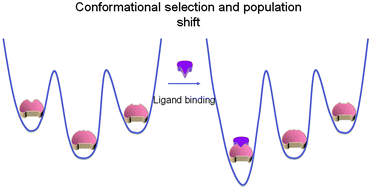The free energy landscape in translational science: how can somatic mutations result in constitutive oncogenic activation?
Abstract
The free energy landscape theory has transformed the field of protein folding. The significance of perceiving function in terms of conformational heterogeneity is gradually shifting the interest in the community from folding to function. From the free energy landscape standpoint the principles are unchanged: rather than considering the entire protein conformational landscape, the focus is on the ensemble around the bottom of the folding funnel. The protein can be viewed as populating one of two states: active or inactive. The basins of the two states are separated by a surmountable barrier, which allows the conformations to switch between the states. Unless the protein is a repressor, under physiological conditions it typically populates the inactive state. Ligand binding (or post-translational modification) triggers a switch to the active state. Constitutive allosteric mutations work by shifting the population from the inactive to the active state and keeping it there. This can happen by either destabilizing the inactive state, stabilizing the active state, or both. Identification of the mechanism through which they work is important since it may assist in drug discovery. Here we spotlight the usefulness of the free energy landscape in translational science, illustrating how oncogenic mutations can work in key proteins from the EGFR/Ras/Raf/Erk/Mek pathway, the main signaling pathway in cancer. Finally, we delineate the key components which are needed in order to trace the mechanism of allosteric events.

- This article is part of the themed collection: The free energy landscape: from folding to cellular function

 Please wait while we load your content...
Please wait while we load your content...